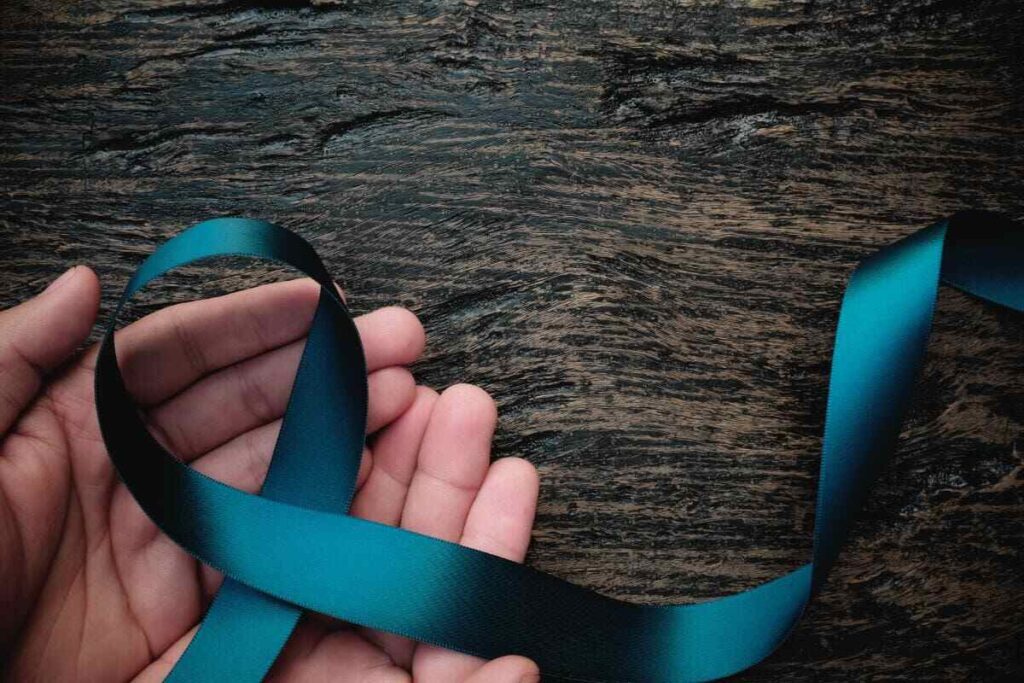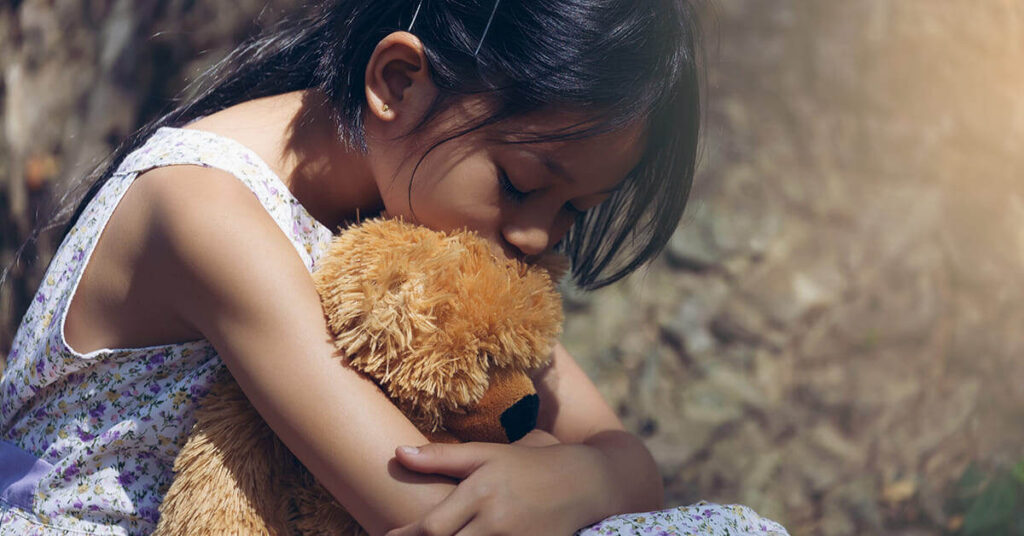As we approach PTSD awareness day on June 27th, we at Mind Family believe that it is high time parents should learn about the signs of post-traumatic stress disorder in kids.
PTSD can profoundly impact young lives, stemming from exposure to terrifying events that leave lasting emotional and psychological scars. Understanding this condition is crucial for all of us, as it shapes how children navigate their world and develop coping mechanisms.
In this article, we will give you the telltale signs of Post-Traumatic Stress Disorder In Kids and will discuss the alarming impacts of PTSD on children. Furthermore, we will also provide you with tips for dealing with PTSD in children.
So without further ado, this PTSD Awareness Day let’s point our gaze to our kids.
What Is PTSD Awareness Day?
Every year, on June 27th, the world observes PTSD Awareness Day. It is a great opportunity to learn the causes and impacts of post-traumatic stress disorder (PTSD) among people.

This understanding triggers compassion for those with mental health issues and encourages us to empathize with them while supporting them through difficult times – we also become cautious about mental illnesses.
Post-Traumatic Stress Disorder (PTSD) in children often occurs after they have witnessed or experienced an extremely terrible event.
Girls are more likely than boys to get affected by PTSD as shown by statistics obtained from National Survey indicates that 8% of girls and only 2 % of boys aged between 13-18 years old have ever been diagnosed with post-traumatic stress syndrome.
The likelihood of developing increases with age among girls in this age bracket however the opposite is true for boys i.e., the older they become less susceptible they are likely going develop such conditions.
Caregivers should recognize these signs of post-traumatic stress disorder in kids early enough since delayed intervention may worsen the child’s situation.
5 Alarming Signs Of Post-Traumatic Stress Disorder In Kids
Parents and caregivers need to recognize the signs of Post-Traumatic Stress Disorder in children so that they can intervene and provide support at an early stage.

Below are five alarming signs of post-traumatic stress disorder in kids:
1. Symptoms of Re-experiencing
Children with PTSD often relive the traumatic event through upsetting memories, dreams or flashbacks. Sometimes these thoughts are so vivid that they cause physical reactions like sweating, trembling or a racing heart rate.
Also, they might have severe emotional distress whenever they come across anything that reminds them of what happened. This may disrupt their friendships as well as daily activities.
2. Avoidance
One of the telltale signs of post-traumatic stress disorder in kids is that kids may do everything possible to steer clear of any situation relating to the trauma. They could avoid particular places, individuals, or even activities that remind them about it.
By shunning these memory triggers, they hope to reduce their fear and worry; however, this might also prevent them from understanding or dealing with their emotions regarding the incident which could keep them distressed for longer periods.
3. Negative Changes in Mood and Thoughts:
Children may show chronic negative emotions including fear, anger, guilt, or shame after a terrifying incident. These feelings are intense and can result in self-blaming thoughts or negative beliefs about oneself and the world.
One of the common signs of post-traumatic stress disorder in kids is when they start thinking that the world is dangerous or they are responsible for what happened to them. Such thoughts distort reality making them feel unworthy and insecure.
4. Hyperarousal:
One of the subtle signs of post-traumatic stress disorder in kids is that kids often feel more alert than normal as if they are sensing threats all around them. They tend to be always jumpy, restless, or irritable such that it becomes hard for them to calm down or concentrate on anything.
Problems with sleep are also prevalent whereby they find difficulty falling asleep, staying asleep, or waking up due to bad dreams.
Additionally, hypervigilance might occur when these children continually scan their surroundings for any signs of danger; this makes them tire easily thereby aggravating other symptoms further.
5. Changes in Behavior:
Post-traumatic stress disorder can bring about observable changes in behavior among children. They may become socially withdrawn by shunning away from peers or activities they used to love doing together.
On the other hand, there could be sudden outbursts of aggression or clinginess where affected persons seek comfort from trusted individuals.
In a school setting, the signs of post-traumatic stress disorder in kids might look like trouble staying focused on learning because of increased emotional distress associated with trauma experiences thus poor academic performance follows suit.
These changes usually represent efforts made towards managing overwhelming feelings as well as re-establishing personal authority over life affairs.
It is important to recognize early such indications so that appropriate assistance can be given and treatment sought where necessary for kids with post-traumatic stress disorder (PTSD).
5 Alarming Impacts Of PTSD On Children

These are some of the impacts of PTSD on children:
1. Damaged Emotional Control
Kids may not be able to control their emotions because of this illness. They would regularly have extreme mood changes and could never guess when they were going to become angry scared or anxious.
This makes it difficult for them to make friends and fit in at school, with their family members, or even with their teachers.
2. Cognitive Functions’ Weakening:
One of the most harmful Impacts Of PTSD On Children is the child’s ability to think by attacking cognitive skills such as attention span, memory retention, and problem-solving abilities.
It is hard for these children to concentrate while in class because they either keep on thinking about what happened during the traumatic event or stay alert waiting for something terrible to take place.
3. Retreat from Socializing:
Most of the time, these kids won’t feel like talking or playing with others anymore just like before being diagnosed with post-traumatic stress disorder (PTSD).
They may avoid friends and isolate themselves from the rest of the family which leaves them feeling alone all through hence worsening signs of this condition.
4. Somatic Troubles:
Chronic stress resulting from post-traumatic stress disorder (PTSD) can also lead to various somatic complications such as migraines, and stomach aches among others.
Additionally, sleep disturbances characterized by nightmares plus insomnia are very common thus affecting overall health and functioning.
5. Academic Performance Decline:
It negatively affects learning capabilities too especially when one fails to take into consideration emotional disturbance and cognitive dysfunction caused by it. Therefore, students find it hard to focus while in class and forget about doing homework assignments, projects
They stop participating fully in extracurricular activities offered by schools which might see them drop out later due to poor grades scored without appropriate remedial support interventions.
These impacts of ptsd on children reveal the many different aspects in which post-traumatic stress disorder may impact a child’s life thus necessitating early intervention programs coupled with comprehensive support structures to avert lasting effects.
5 Effective Tips For Dealing With PTSD In Children

For parents and caregivers dealing with children who have PTSD, here are five tips for dealing with PTSD in children::
1. Safety and Routine:
Establish a predictable environment around the kid. Making them feel safe and reducing anxiety triggers can involve setting routines. There should be clear expectations for them to follow through each day, which will help create stability in their lives.
2. Open Communication:
To tackle the signs of post-traumatic stress disorder in kids, create an atmosphere where children can freely speak up about what they think or feel concerning their experience of life so far.
It is important not to judge or criticize but to listen actively; let them know that their feelings are valid regardless of whether we understand or not. Talking about trauma should be encouraged at an age-appropriate level without forcing it upon them when they are not ready.
3. Relaxation and Coping Skills:
Dealing with PTSD in children requires you to teach relaxation methods like deep breathing exercises for calming down during panic attack situations caused by stress factors related to post-traumatic disorders among kids; use mindfulness techniques such as progressive muscle relaxation.
These skills enable young people to deal with stress better thus preventing instances of anxiety episodes from occurring frequently. In addition to that, children should be allowed to spend time doing things that make them happy or peaceful.
4. Professional Support:
Consult mental health professionals who specialize in working with children who show signs of post-traumatic stress disorder in kids.
Therapy may involve a cognitive behavioral approach where thoughts and patterns surrounding traumatic events get challenged until new ones are adopted thereby helping patients cope more effectively.
Pharmacological intervention might also become necessary if symptoms become very severe under guidance from qualified doctors only.
5. Educate & Empower:
Parents need knowledge about how this condition affects different aspects of a child’s life thus creating awareness among all stakeholders responsible for looking after these little ones’ welfare systems including schools etcetera while at home.
Also sharing information on resilience-building activities can go a long way towards celebrating strengths gained through overcoming challenges associated with such conditions among others.
Implementing these strategies can be hard sometimes but with patience and consistency, recovery is possible.
A Word From Mind Family
As we observe PTSD Awareness Day, it’s vital to understand how PTSD affects children. Early recognition of symptoms such as flashbacks, avoidance, mood changes, hyperarousal, and behavioral shifts is crucial.
Creating a safe environment, encouraging open communication, teaching coping skills, seeking professional help, and educating ourselves can support children in their healing journey.
Let’s raise awareness, reduce stigma, and provide the compassionate support children need to recover and thrive.
Frequently Asked Questions (FAQs)
1. What are some tips for dealing with PTSD in children?
Establish a stable routine, encourage open communication, teach relaxation techniques, seek professional support, and educate the child and others about PTSD.
2. What are the Signs Of Post-Traumatic Stress Disorder In Kids?
Signs include re-experiencing trauma through flashbacks, avoidance of reminders, negative mood changes, hyperarousal, and behavioral shifts like withdrawal or aggression.
3. What are the Impacts Of PTSD On Children?
PTSD can impair emotional regulation, cognition, and social interactions, leading to physical health issues, academic challenges, and social withdrawal.
4. Why is PTSD Awareness Day Important?
PTSD Awareness Day raises awareness, reduces stigma, supports trauma survivors, advocates for better mental health care, and promotes prevention and early intervention strategies.











Leave a Reply